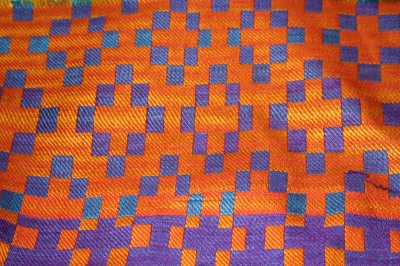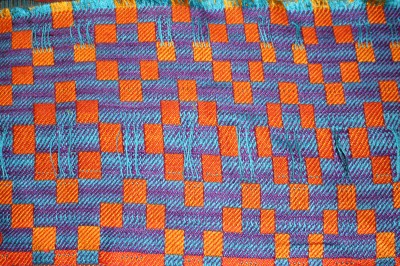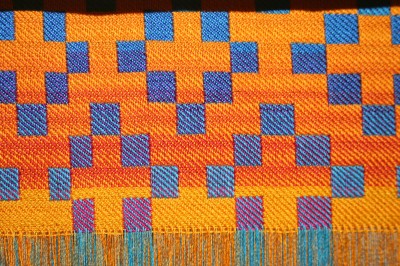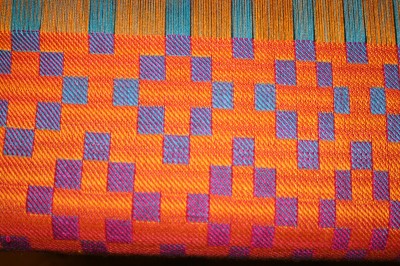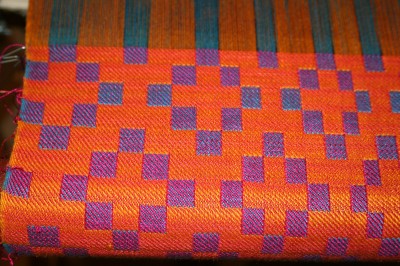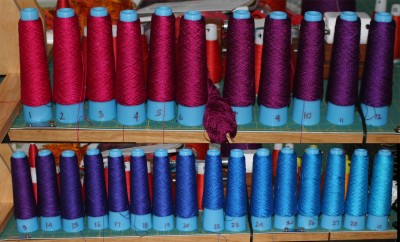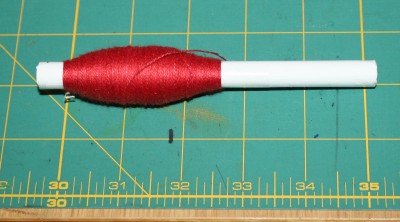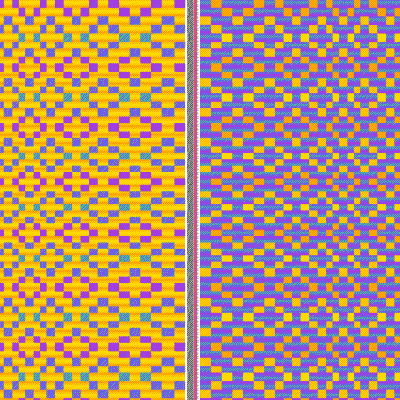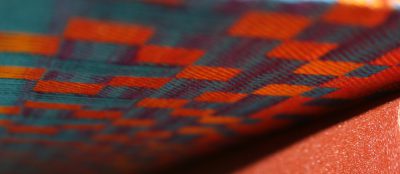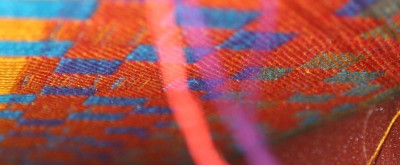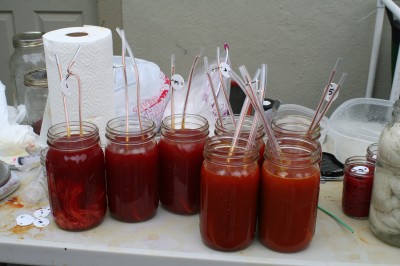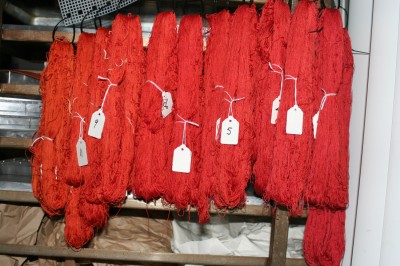After several more unfruitful repair attempts, I called AVL yesterday. I talked to one of their technicians and within fifteen seconds he told me the cause and the solution. I moved out the end caps on shafts 22-24 a little bit and voila! problem fixed. Like magic.
So I have been merrily weaving away, and am now at the 19″ mark, about 1/4 of the way through. I’m weaving at about 3.6 picks per second (including advancing the warp, checking the underside for errors, etc.), which means that it will (in theory anyway) take me about 6 hours to weave the rest of the shawl. Add another two hours for unpicking errors, floats, etc. and that comes out to about 8 hours. This is reassuring since it means I can most likely get the shawl woven in time for Complex Weavers. I will likely be finishing it on the plane and wet-finishing it in the hotel, but hey, a girl’s gotta do what a girl’s gotta do, right? And it means I will have something new to show at Complex Weavers/Convergence.
I took a couple photos of the work-in-progress, but I couldn’t get enough of it in the shot to show off the color progression. So instead I will give you a photo of the first 36 pirns, which do show a clear color progression, and are quite pretty, arranged on the windowsill:

And now, back to weaving. I gots a shawl to finish, after all!
